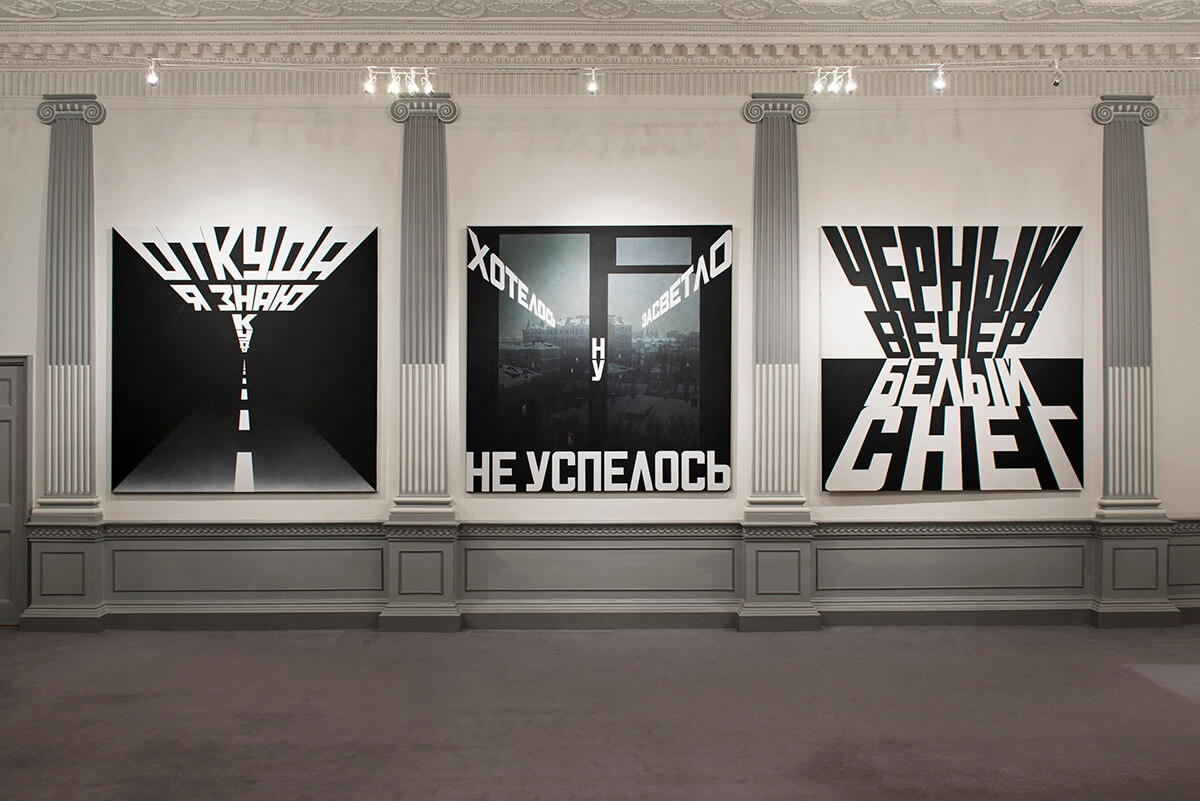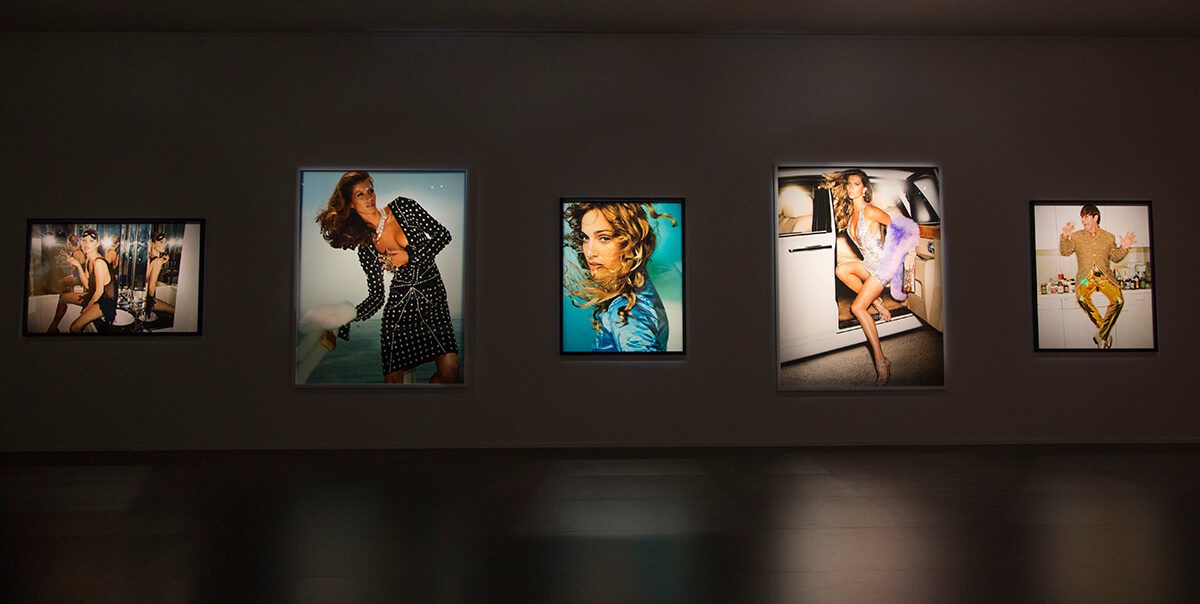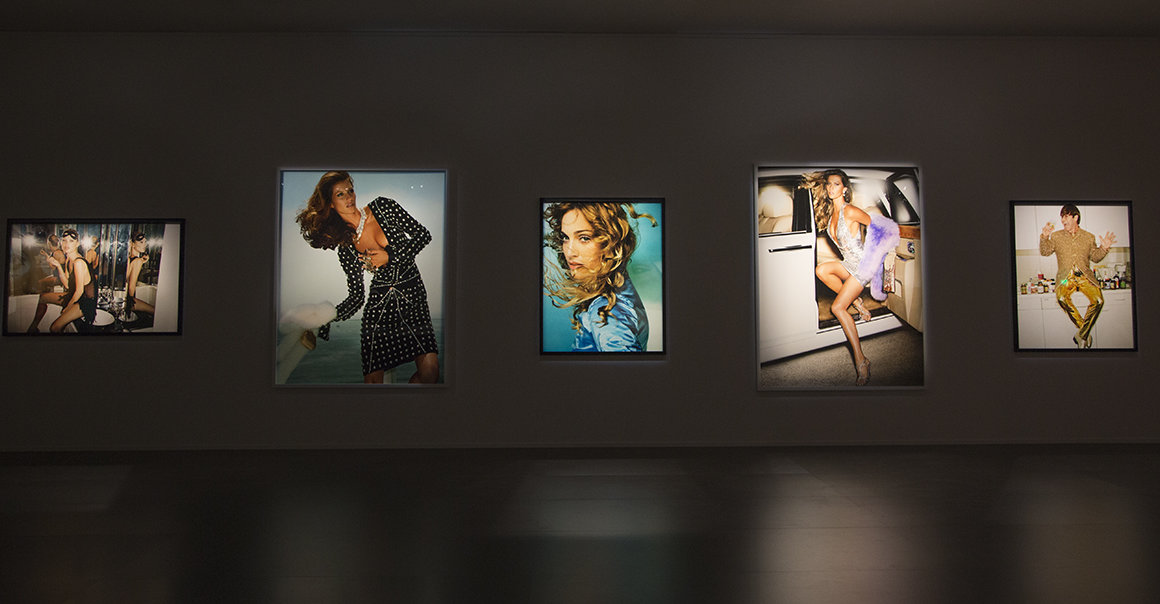
Three paintings by Russian artist Erik Bulatov in his 2015 show ‘Bot’ at de Pury de Pury in London
The time is right for the art auction world to embrace the new digital technologies and take auctions online. That is the way to tap the vast reserves of potential new buyers, says our columnist Simon de Pury
Conceptually, I find myself fascinated by what is happening in the online world within the art market. This is a market that has been the most resistant of any to the digital revolution. And the likely cause of this is that it’s in nobody’s interest, in terms of the market’s key players, to make any changes to the way the system works.
But progress cannot be postponed forever. We have seen the rise of a number of companies that have focused on the online side of the art world. The pioneer of all of them, artnet.com, started 27 years ago with a price guide for artists’ works. For having information at your fingertips, they were the pioneer. Then you have companies in the auction space such as Artsy, Paddle8 (which recently merged with another online auction company, Auctionata) and Artspace which is also doing online auctions. The main auction houses also have an online side to their business.
Follow LUX on Instagram: the.official.lux.magazine
The difficulty that the main bricks-and-mortar houses have is that the minute they have a really exciting collection or group of works, their own specialists will fight to have it in their main sales rather than seeing it go to the houses’s online business. So already they effectively have internal competition built in.
Recently I teamed up with Arnaud Massenet, a co-founder with his ex-wife Nathalie Massenet of Net-a-Porter. Arnaud is a passionate collector with a strong interest in art, and so we have put on a number of auctions which we have held online with our company, de Pury de Pury. I also conducted the three first annual benefit auctions for the Leonardo DiCaprio Foundation. The first two were bricks-and-mortar auctions at which we raised $26m and $40m respectively. With the third one, which we did both live and with an online component, we raised $48m for the foundation. There were challenges such as having to develop a site that could handle the massive increase of traffic you can expect if you have a project involving a celebrity of the stature of DiCaprio. It was a good stress test for the online infrastructure. We have also used a mix of live and online sales for benefit auctions such as for the Fondation Beyeler in Basel.
Right now we believe in this hybrid model, but when you sell art works of quality, and when you put sales together that have been curated, you have to give the chance to potential buyers, if they wish, to see the works physically. You cannot just dispense altogether with offering that possibility to your potential purchasers. The approach is very much to have a stunningly staged physical exhibition, and at the same time, as enticing as possible an experience for the user who will participate solely online.
When you buy and sell artworks at a price range between $10k and $2m at auction with the main houses, you have to leave quite a considerable amount on the table in terms of the buyer’s premiums that need to be paid – 25% on top of the hammer price. Surely for works in that price bracket there must be a more efficient way of selling art, which should eventually put pressure on the commissions.
While the very top end of the market will always be about privileged personal relationships rather than internet sales, I believe that over the next two to five years we will witness a big transformation of the art market, involving a massive increase of its online component.
Read next: The greatest tasting of Masseto in history
At the moment, when you look at an auction online you have a very static image of the auctioneer and the experience is rather boring. This could quite easily be made to be much more lively, fun and animated to engage those who might bid from their office, home or swimming pool or from wherever they are following the sale. This will no doubt happen very soon. Online auctions will become a little more like some of the talk shows on American television, which are live and where you have a studio audience. Having an audience creates the atmosphere that comes across when you watch the programme, with laughing, cheering and clapping, so making it more of a show.
This is not so much of a radical transformation as some people may think. The big auctions now are packed with people filling the sales room, but as soon as you get above a certain price level most of the action takes place on the telephone. You just have the trade and some collectors who want to follow the market closely who remain in the room. So the challenge is to convey the atmosphere of what is happening and the mood of the room. The more successfully you can convey this, the easier it will be for people to get that feel without physically being there.

Photographs from Mario Testino’s show ‘Heat’ at the Dubai Design District, 2016
A key element is trust. The reason why some online auction companies have not been successful yet is that there is no trust in their expertise or track record. It is essential that such a record is established so that trust develops. A lot will be down to curating: at the moment online art and auction sites just have too much content, and need to have a clear curatorial vision. Once a track record for both buying and selling is established, it becomes much easier, because before that point is reached, you have to make ten times the effort for a tenth of the result. From my 16 years at Sotheby’s, I know that when you work for one of the main players of the duopoly [Sotheby’s and Christie’s], 80 to 90 per cent of the interesting works automatically cross your desk. You just have to make sure that you win slightly more often than you lose. What you lose gets sold by the other auction house. It is difficult for a newcomer in the online world to crack that.
Certain genres of work such as editions, prints and photographs lend themselves to online sales because, while you still need to get a condition report, you will likely have already seen works from that edition so know exactly what they look like. The minute you venture into genres where uniqueness plays a role, such as paintings or other one-off artworks, it changes. Also, the borders between various categories of contemporary culture are breaking down, so architecture, cinema, fashion and music now all cross over with art. We will have many more collaborations between these categories and the internet lends itself to this situation, as breaking down these barriers is done so much more easily online than in the bricks-and-mortar world.
The entry point of the internet is much less forbidding to those who fear crossing the threshold into the art world. It is much less intimidating than going into an auction house and brings many new potential buyers to the market. In one year, the number of individual clients at one of the big auction houses may be around 20,000 – that is an estimate, but in any case it’s a very small number and shows you how that the art market has a massive potential to grow. There is a very small group of individuals who are willing to pay $100m, or more, on a single work. There are slightly more people who are willing to pay $50m on a single work. Further down the scale, you have more people still who are willing to pay $10m, and many players at $1m. There is a huge number of people who do not collect or buy at all and who have no interest, to date, in spending part of their wealth on art. That suggests that the potential growth of the auction market is substantial, and new technologies are the best way to enlarge that art-buying public.
Simon de Pury is an art auctioneer and collector and the founder of de Pury de Pury
depurydepury.com







Recent Comments